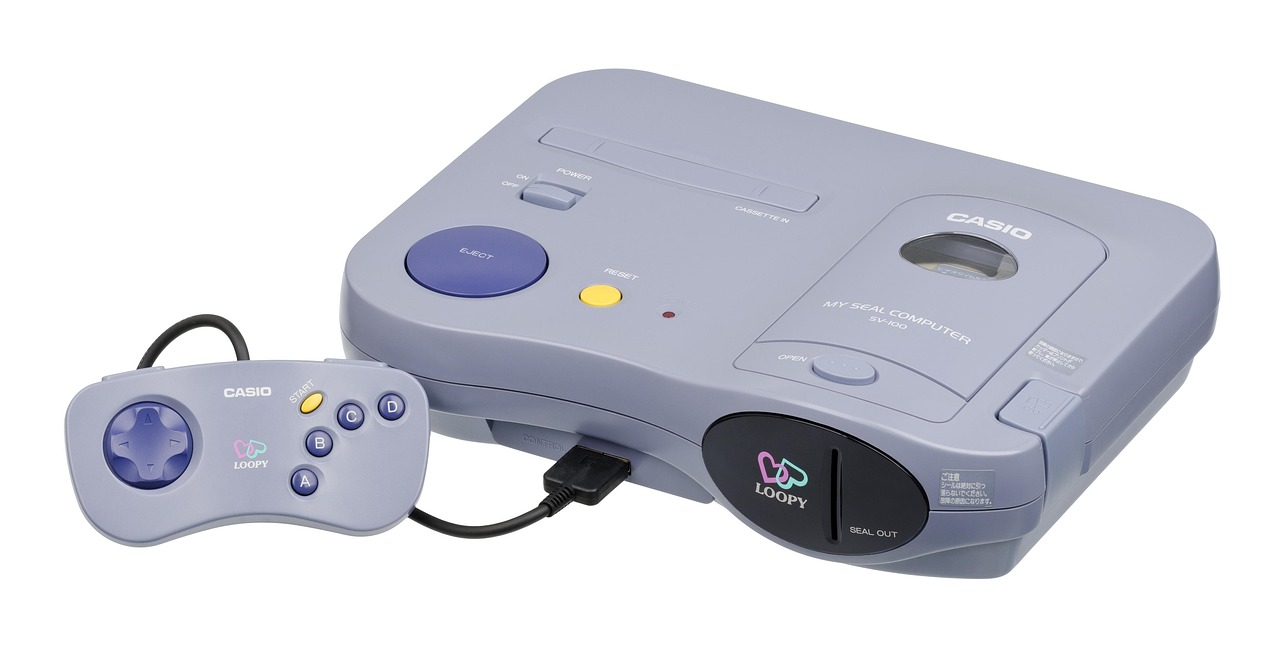Are you tired of unhealthy takeout and last-minute, regretful food choices? Does the thought of eating healthier feel overwhelming? You’re not alone! Embracing a healthy lifestyle doesn’t require drastic overnight changes. Instead, focusing on consistent, well-planned meal preparation can make a world of difference. This comprehensive guide will equip you with the knowledge and tools to master healthy food prep, making nutritious eating a sustainable and enjoyable part of your routine.
Planning Your Healthy Food Prep
Assessing Your Needs and Goals
Before diving into recipes and chopping vegetables, take a moment to reflect on your individual needs and goals. What do you hope to achieve through healthy food prep?
- Weight Management: Are you aiming to lose, maintain, or gain weight?
- Dietary Restrictions: Do you have any allergies, intolerances, or dietary preferences (vegetarian, vegan, gluten-free, etc.)?
- Time Constraints: How much time can you realistically dedicate to food prep each week?
- Budget: What is your budget for groceries?
Answering these questions will help you tailor your food prep plan to your specific circumstances. For example, someone aiming for weight loss might focus on portion control and calorie tracking, while someone with a gluten intolerance will need to prioritize gluten-free ingredients.
Creating a Meal Plan
A well-structured meal plan is the backbone of successful food prep. Start by outlining your meals for the week, including breakfast, lunch, dinner, and snacks.
- Choose Recipes: Select recipes that align with your dietary needs and preferences. Websites like Allrecipes, EatingWell, and BBC Good Food offer a wide variety of healthy recipes.
- Consider Variety: Incorporate a diverse range of foods to ensure you’re getting all the necessary nutrients. Aim for a mix of fruits, vegetables, lean proteins, and whole grains.
- Repurpose Ingredients: Choose recipes that share common ingredients to minimize waste and streamline your prep process. For example, roasted chicken can be used in salads, soups, and wraps.
Example: A simple meal plan for a week could include overnight oats with berries for breakfast, a quinoa salad with grilled chicken for lunch, and baked salmon with roasted vegetables for dinner.
Shopping Smart
Once you have your meal plan, create a detailed grocery list based on the recipes you’ve chosen. Stick to your list when shopping to avoid impulse purchases that can derail your healthy eating goals.
- Shop the Perimeter: Focus on the outer aisles of the grocery store, where you’ll find fresh produce, lean proteins, and dairy products.
- Read Labels Carefully: Pay attention to serving sizes, ingredients, and nutritional information.
- Buy in Bulk: Consider buying staples like grains, beans, and nuts in bulk to save money.
- Embrace Frozen Foods: Frozen fruits and vegetables are a convenient and affordable way to ensure you always have healthy options on hand. They often retain more nutrients than fresh produce that has been sitting on shelves for days.
Mastering Food Prep Techniques
Proper Food Storage
Proper food storage is crucial for preserving freshness and preventing foodborne illnesses. Invest in quality airtight containers to keep your prepped meals and ingredients fresh.
- Cool Food Quickly: Allow cooked food to cool to room temperature before refrigerating it.
- Use Airtight Containers: Store food in airtight containers to prevent it from drying out and absorbing odors.
- Label Everything: Label containers with the date and contents to ensure you use older items first.
- Know the Shelf Life: Be aware of the recommended storage times for different types of food. Generally, cooked meals can be stored in the refrigerator for 3-4 days.
Tip: Glass containers are a great option because they are non-toxic, easy to clean, and can be used in the microwave and oven.
Efficient Chopping and Prepping
Efficient chopping and prepping can significantly reduce the amount of time you spend in the kitchen each week. Designate a block of time for prepping ingredients in bulk.
- Invest in Good Knives: A sharp set of knives will make chopping and slicing much easier and safer.
- Batch Prep: Chop vegetables, cook grains, and roast proteins in large batches to save time.
- Utilize Kitchen Gadgets: Food processors, mandolines, and spiralizers can speed up the prep process.
- Organize Your Workspace: Keep your workspace clean and organized to minimize distractions and maximize efficiency.
Example: Spend a Sunday afternoon chopping all your vegetables for the week, cooking a batch of quinoa, and grilling chicken breasts. Then, you can easily assemble your meals throughout the week.
Cooking Methods for Meal Prep
Certain cooking methods are particularly well-suited for meal prep, as they produce foods that store well and reheat easily.
- Roasting: Roasting vegetables and proteins brings out their natural flavors and makes them tender and juicy.
- Grilling: Grilling is a healthy way to cook proteins and vegetables, adding a smoky flavor.
- Baking: Baking is a versatile method that can be used for everything from breads and muffins to casseroles and roasted meats.
- Slow Cooking: Slow cookers are perfect for making large batches of soups, stews, and chili that can be easily reheated.
Tip: Avoid overcooking foods, as they will become dry and less palatable when reheated.
Building Balanced Meal Prep Recipes
Incorporating Macronutrients
A balanced meal should include all three macronutrients: carbohydrates, protein, and fat. Aim for a mix of complex carbohydrates, lean protein sources, and healthy fats in each meal.
- Carbohydrates: Choose complex carbohydrates like whole grains, brown rice, quinoa, and sweet potatoes over refined grains like white bread and pasta.
- Protein: Opt for lean protein sources like chicken breast, fish, beans, lentils, tofu, and Greek yogurt.
- Fats: Incorporate healthy fats like avocado, nuts, seeds, olive oil, and fatty fish.
Example: A balanced meal prep recipe could include grilled chicken breast (protein), brown rice (carbohydrates), and steamed broccoli with a drizzle of olive oil (fats).
Adding Fruits and Vegetables
Fruits and vegetables are essential for a healthy diet, providing vitamins, minerals, and fiber. Aim to include a variety of colorful fruits and vegetables in your meal prep recipes.
- Variety is Key: Choose fruits and vegetables from all color groups to ensure you’re getting a wide range of nutrients.
- Raw vs. Cooked: Include both raw and cooked fruits and vegetables in your diet. Raw fruits and vegetables retain more vitamins, while cooked vegetables are often easier to digest.
- Prep Strategies: Wash and chop fruits and vegetables in advance to make them easily accessible for snacking and meal assembly.
Tip: Add berries to your overnight oats, include a side salad with your lunch, or roast a medley of vegetables for dinner.
Portion Control
Even healthy foods can contribute to weight gain if consumed in excess. Practicing portion control is essential for maintaining a healthy weight.
- Use Smaller Plates: Using smaller plates can help you visually control your portions.
- Measure Your Food: Use measuring cups and spoons to accurately measure your portions.
- Pre-Portion Meals: Divide your prepped meals into individual containers to avoid overeating.
- Listen to Your Body: Pay attention to your hunger and fullness cues. Eat until you’re satisfied, not stuffed.
Data: Studies show that pre-portioning meals can lead to a significant reduction in calorie intake.
Maintaining Your Healthy Food Prep Routine
Troubleshooting Common Challenges
Even with the best-laid plans, challenges can arise. Here are some common issues and how to address them:
- Lack of Time: If you’re short on time, focus on simple, one-pot meals like soups and stews. Consider prepping ingredients on the weekend and assembling meals during the week.
- Boredom: To avoid food prep boredom, try new recipes regularly. Experiment with different flavors and cuisines.
- Food Waste: Reduce food waste by repurposing leftovers. Use leftover roasted chicken in salads or soups. Freeze excess fruits and vegetables for smoothies.
- Loss of Motivation: Stay motivated by tracking your progress, setting realistic goals, and rewarding yourself for your efforts.
Adapting to Your Changing Schedule
Life is unpredictable, and your schedule may change from week to week. Be flexible and adapt your food prep plan as needed.
- Plan Ahead: Review your schedule each week and adjust your meal plan accordingly.
- Have Backup Options: Keep a few frozen meals or healthy convenience foods on hand for emergencies.
- Don’t Be Afraid to Adjust: If you’re too busy to cook a full meal, opt for a simple salad or a protein smoothie.
Staying Consistent
Consistency is key to reaping the long-term benefits of healthy food prep. Make it a habit by incorporating it into your weekly routine.
- Set a Schedule: Designate specific days and times for meal planning, grocery shopping, and food prep.
- Make it Enjoyable: Put on some music, listen to a podcast, or invite a friend to join you.
- Be Patient: It takes time to develop a new habit. Don’t get discouraged if you miss a week or two. Just get back on track as soon as possible.
Conclusion
Healthy food prep is an investment in your well-being. By planning your meals, mastering food prep techniques, and building balanced recipes, you can create a sustainable and enjoyable path to healthier eating. Remember to be patient with yourself, adapt to your changing schedule, and celebrate your successes along the way. Embrace the power of food prep and unlock a healthier, happier you!



